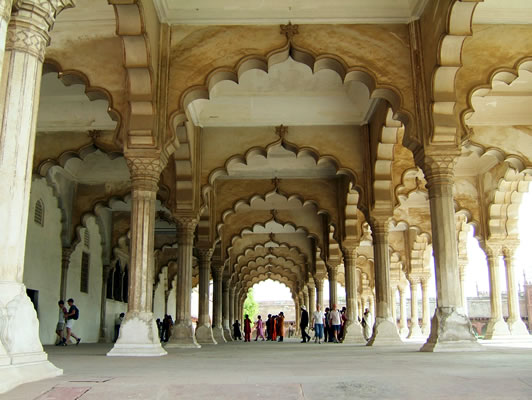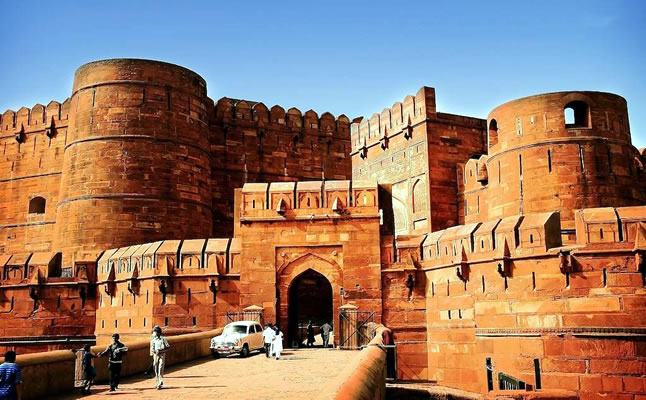MUTHAMMAN BURJ (SHAH-BURJ &
JHAROKHA
(1632-40 A.D.)
Hindi Version |
|
[Not a valid template]This beautiful palace surmounts the largest bastion of Agra Fort on the riverside, facing the east. It was originally built of red stone by Akbar who used it for Jharokha Darshan. As well as for sun worship, every day at sun rise. Jehangir also used it as Jharokha, as is faithfully shown in his painting made in 1620. He also instituted his ‘Adl-I-Zanjir’ (The Chain of Justice) on its southside. Owing to its octagonal plan, it was called ‘Muthamman-Burj’. It has also been mentioned as ‘Shah-Burj’ the Imperial or King’s Tower by Persian Historians and Foreign Travellers and it is a misnomer to call it ‘Jasmine Tower’ or ‘Samman Burj’. As recorded by the contemporary Historian Lahauri. It was rebuilt with white marble by Shahjehan around 1632-40. He also used it for Jharokha Darshan which was an indispensable a Mughal institution as was ‘Durbar’. It is an octagonal building, five external sides of which, making a Dalan overlook the river. Each side has pillars and brackets openings. The eastern-most side projects forward and accommodates a Jharokha majestically on the western side of this palace is a spacious dalan with Shah-Nashin (Alcoves). A shallow water basin (Kunda) is sunk in its pavement. It is decorously inlaid. [Not a valid template]This dalan opens on a court which has a chabutara projected by a jali screen, on its northern side; serious of rooms leading to Shish Mahal on its western side; and a colonnaded Dalan with a room attached to it on the southern side. It is thus a large complex entirely built of white marble. It has deep niches on the walls, to break the monotony. Dados have repetitive stylized inlaid [Not a valid template]creepers on borders and carved natural plants in the centre. Pillars, Brackets and Lintels also bear exquisitely inlaid designs and it is one of the most profusely ornamented buildings of Shah Jehan. This palace was directly connected to the Diwan-I-Khas, Shish-Mahal, Khas-Mahal and other palaces. And it was from here that the Mughal emperor governed the whole country. The Taj Mahal is in full view from this tower and Shah Jehan spent eight years of his imprisonment (1658-66) in this complex, and he died here. His body was taken by boat to the Taj Mahal and buried. |




